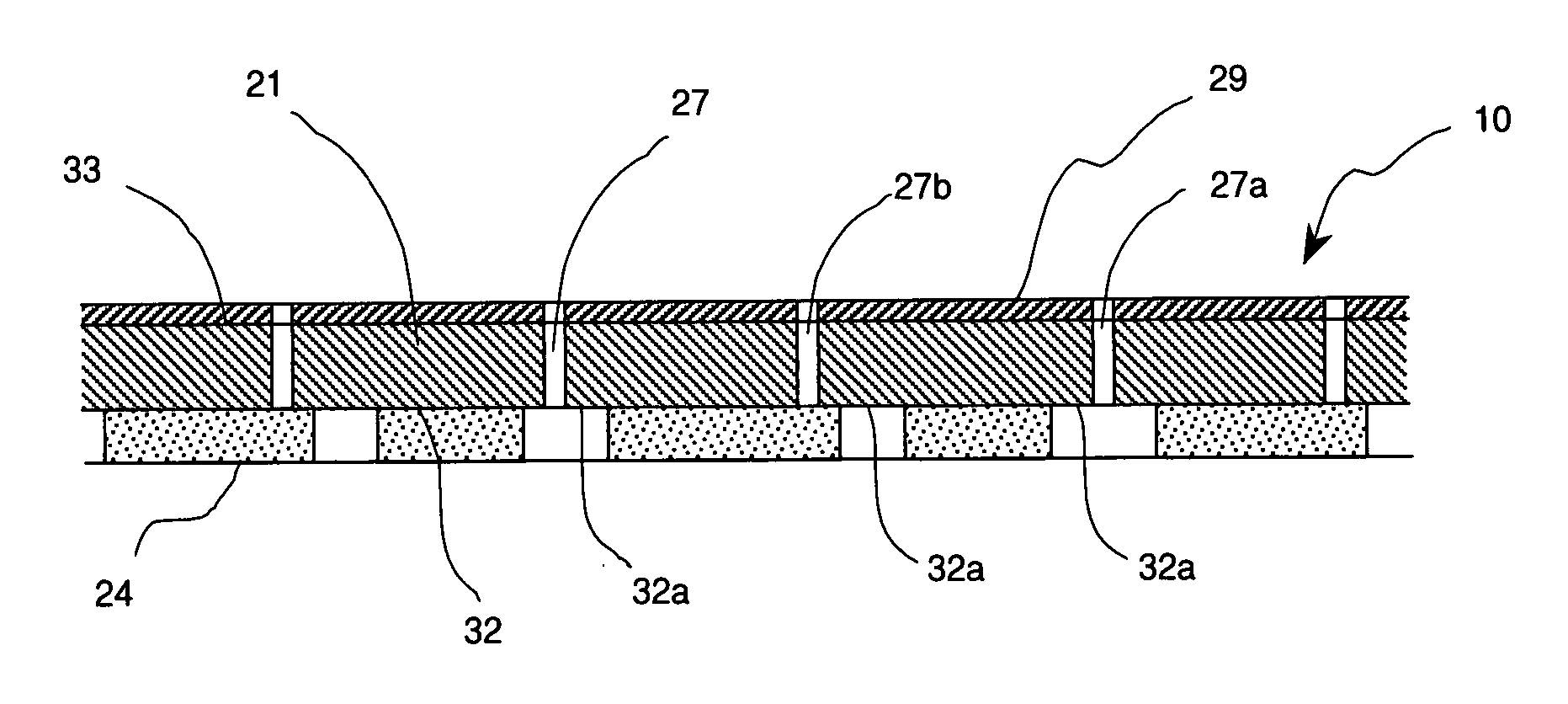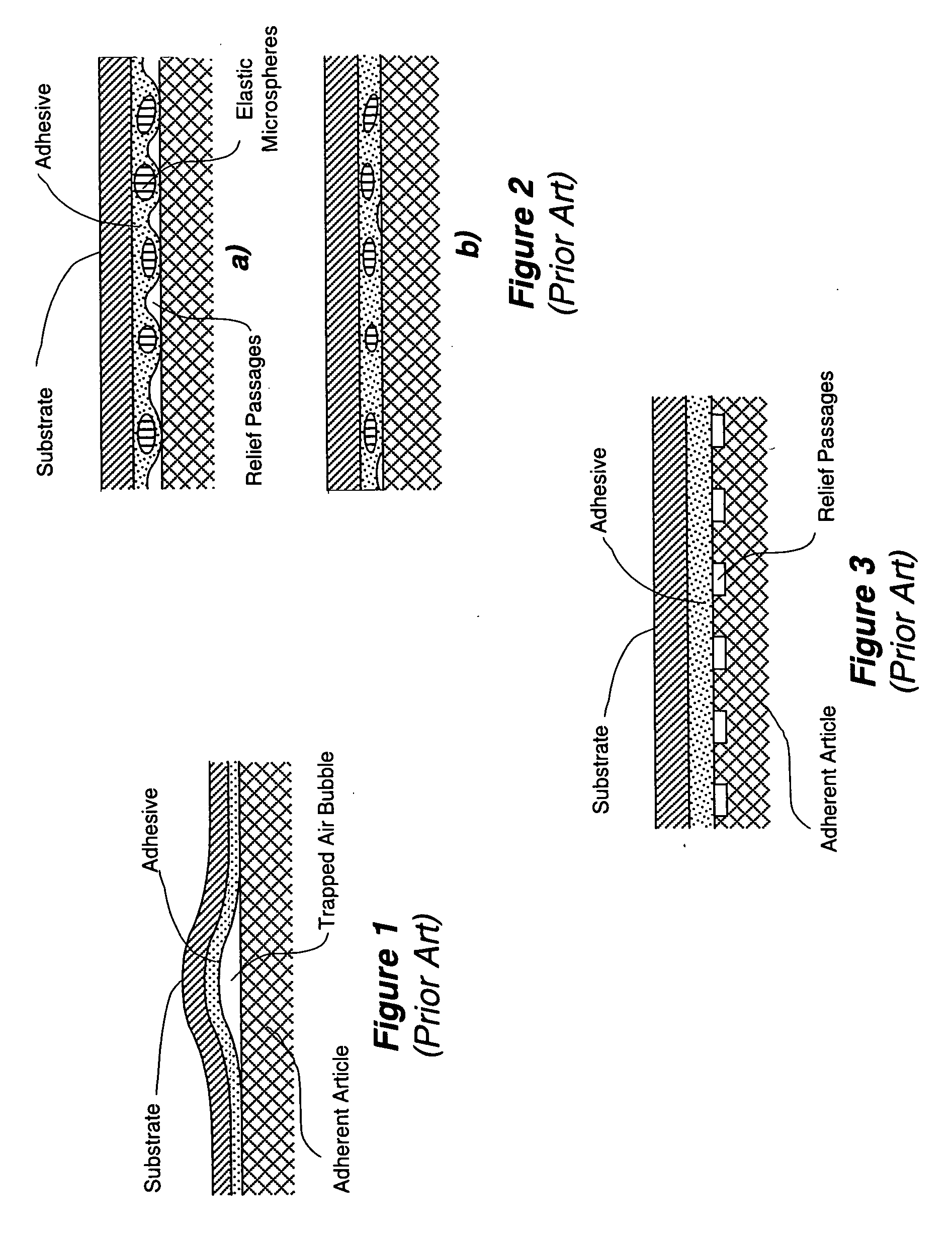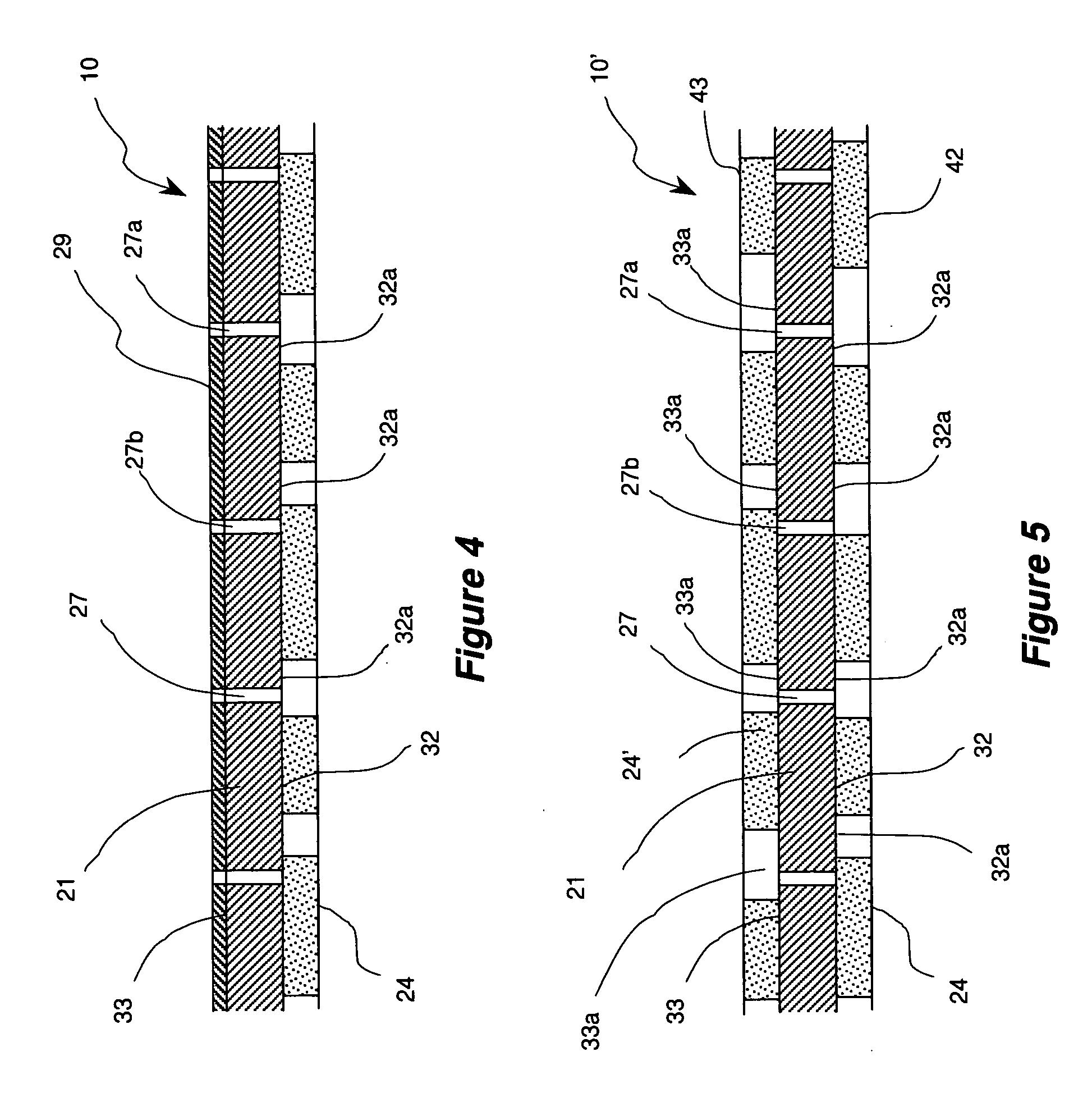Adhesive sheet
- Summary
- Abstract
- Description
- Claims
- Application Information
AI Technical Summary
Benefits of technology
Problems solved by technology
Method used
Image
Examples
example 1
[0051] Table 1 shows theoretical predictions of air flow through smooth holes with diameters of 10, 32, and 100 micrometers installed in a 75 micrometer thick sheet impervious to air and operated with a pressure differential of 1.2 kilo Pascals (4.9 inches of water). (Note that this is the same pressure differential normally used in the Gurley tester.) This data is based on theoretical predictions found in “Effect of Pinholes on Sterile Barrier Properties,” by Earl T. Hackett, Jr. presented at the HealthPak Conference, St. Petersburg, Fla., in March 2001.
TABLE 1Hole Diameter [micrometers]10 μm32 μm100 μmFlow velocity [cm / sec]40035005500Flowrate per hole [cubic0.0003140.0280.039cm / sec]Porosity produced by 1 hole3180003571256per inch square [Gurleyseconds]Areal density of holes3,180362.6necessary to produce poro-sity of 100 Gurley seconds[per square inch]
example 2
[0052] Table 2 shows several suitable choices of diameter and areal density for microscopic holes suitable to relieve 1 cubic centimeter air bubble to atmosphere in less 5 seconds assuming a constant pressure differential of 1.2 kilo Pascals. Sheet thickness is 75 micrometers. Expectedly, the data shows that smaller holes must be applied with greater areal density to meet the specified venting time during installation of adhesive film to an article. Note that even for a 10 micrometer diameter hole the required areal density of 1,000 to 10,000 holes per square inch is realistic and technically attainable.
TABLE 2Time (seconds) required torelieve 1 cubic centimeter airAreal density of microscopicbubble for hole diametersholes [per square inch]10 μm32 μm100 μm12.6103.60.261000.361,0003.210,0000.32
[0053] As already noted, after the film is applied to the article surface and trapped air bubbles are avoided, gas evolution can still occur at the bond interface when the film is exposed to ...
PUM
| Property | Measurement | Unit |
|---|---|---|
| Length | aaaaa | aaaaa |
| Fraction | aaaaa | aaaaa |
| Fraction | aaaaa | aaaaa |
Abstract
Description
Claims
Application Information
 Login to View More
Login to View More - R&D
- Intellectual Property
- Life Sciences
- Materials
- Tech Scout
- Unparalleled Data Quality
- Higher Quality Content
- 60% Fewer Hallucinations
Browse by: Latest US Patents, China's latest patents, Technical Efficacy Thesaurus, Application Domain, Technology Topic, Popular Technical Reports.
© 2025 PatSnap. All rights reserved.Legal|Privacy policy|Modern Slavery Act Transparency Statement|Sitemap|About US| Contact US: help@patsnap.com



